Chloe Rolland
SAM 2: Segment Anything in Images and Videos
Aug 01, 2024



Abstract:We present Segment Anything Model 2 (SAM 2), a foundation model towards solving promptable visual segmentation in images and videos. We build a data engine, which improves model and data via user interaction, to collect the largest video segmentation dataset to date. Our model is a simple transformer architecture with streaming memory for real-time video processing. SAM 2 trained on our data provides strong performance across a wide range of tasks. In video segmentation, we observe better accuracy, using 3x fewer interactions than prior approaches. In image segmentation, our model is more accurate and 6x faster than the Segment Anything Model (SAM). We believe that our data, model, and insights will serve as a significant milestone for video segmentation and related perception tasks. We are releasing a version of our model, the dataset and an interactive demo.
FACET: Fairness in Computer Vision Evaluation Benchmark
Aug 31, 2023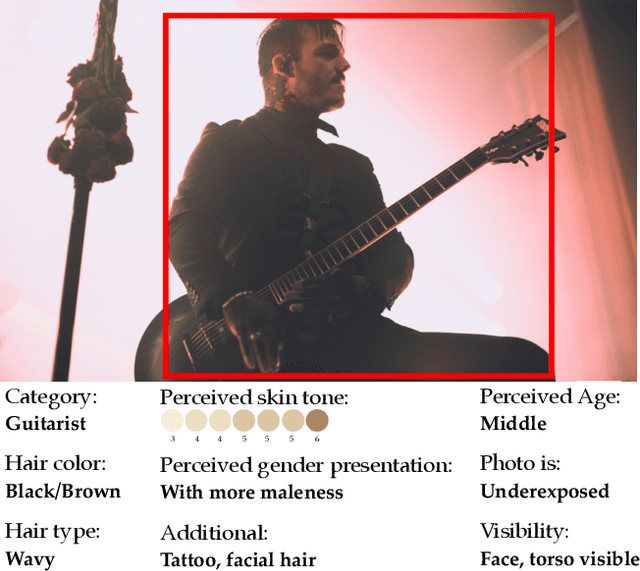
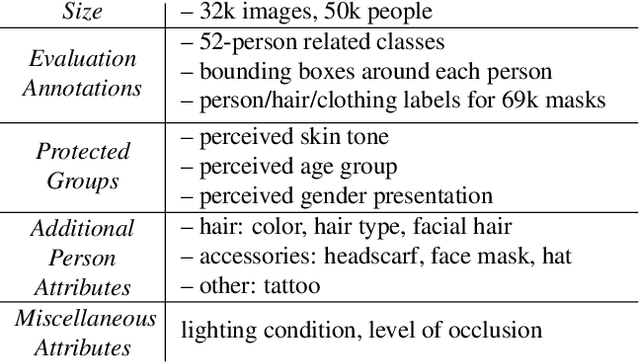

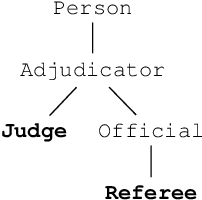
Abstract:Computer vision models have known performance disparities across attributes such as gender and skin tone. This means during tasks such as classification and detection, model performance differs for certain classes based on the demographics of the people in the image. These disparities have been shown to exist, but until now there has not been a unified approach to measure these differences for common use-cases of computer vision models. We present a new benchmark named FACET (FAirness in Computer Vision EvaluaTion), a large, publicly available evaluation set of 32k images for some of the most common vision tasks - image classification, object detection and segmentation. For every image in FACET, we hired expert reviewers to manually annotate person-related attributes such as perceived skin tone and hair type, manually draw bounding boxes and label fine-grained person-related classes such as disk jockey or guitarist. In addition, we use FACET to benchmark state-of-the-art vision models and present a deeper understanding of potential performance disparities and challenges across sensitive demographic attributes. With the exhaustive annotations collected, we probe models using single demographics attributes as well as multiple attributes using an intersectional approach (e.g. hair color and perceived skin tone). Our results show that classification, detection, segmentation, and visual grounding models exhibit performance disparities across demographic attributes and intersections of attributes. These harms suggest that not all people represented in datasets receive fair and equitable treatment in these vision tasks. We hope current and future results using our benchmark will contribute to fairer, more robust vision models. FACET is available publicly at https://facet.metademolab.com/
Segment Anything
Apr 05, 2023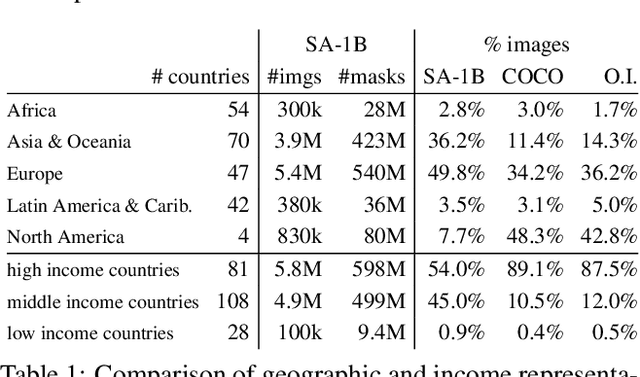

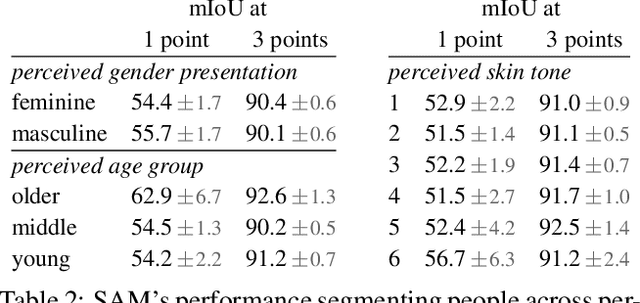

Abstract:We introduce the Segment Anything (SA) project: a new task, model, and dataset for image segmentation. Using our efficient model in a data collection loop, we built the largest segmentation dataset to date (by far), with over 1 billion masks on 11M licensed and privacy respecting images. The model is designed and trained to be promptable, so it can transfer zero-shot to new image distributions and tasks. We evaluate its capabilities on numerous tasks and find that its zero-shot performance is impressive -- often competitive with or even superior to prior fully supervised results. We are releasing the Segment Anything Model (SAM) and corresponding dataset (SA-1B) of 1B masks and 11M images at https://segment-anything.com to foster research into foundation models for computer vision.
 Add to Chrome
Add to Chrome Add to Firefox
Add to Firefox Add to Edge
Add to Edge